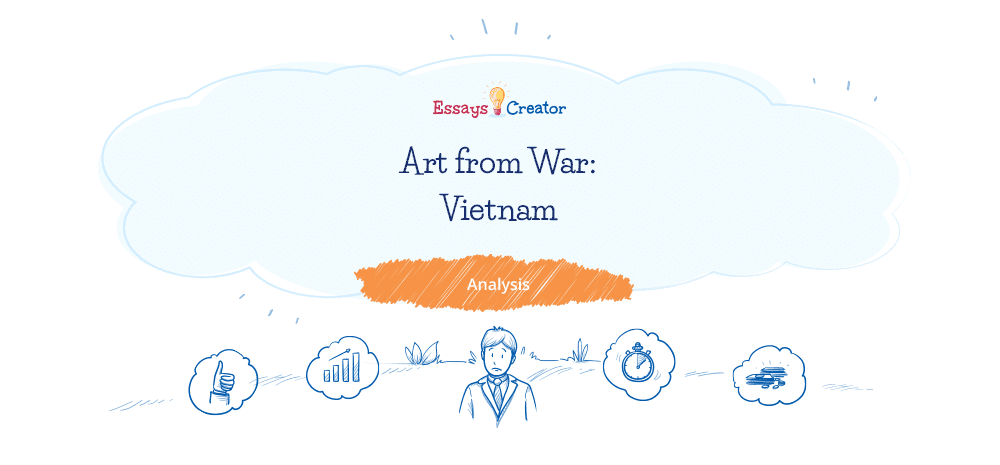
Introduction
This paper evaluates a photo taken by Nick Ut in 1972 where distressed children are seen attempting to flee from something. The text description indicates that the image was depicting terror emanating from war. The image represents children running away from the Napalm bombing during the war in Vietnam (Ut, “The Terror of War: Children on Route 1 near Trang Bang”).
Overall Effect Design
Color: Black and White
Black and white images do not appear very appealing. However, the technology of the time only allowed for such pictures. These colors fail to depict the reality of the objects shown. The children wore different clothes though they appear to have worn dark-colored clothes due to the use of black and white images. The Color also helps illustrate the brightness of an image.
Order your Analysis Essay help today!
Brightness
The image depicted appears to be bright; hence, it enables the observer to make clear conclusions about the objects. Due to the brightness, one can notice that the children are distressed. Some have wrinkled faces while others appear to be crying. This brightness of the image results from a fine focus by the photographer as well as proper radiation in the open space (Fairchild, “Color Appearance Models: CIECAM02 and Beyond”).
Activity
The activities taking place in the image should also be considered. The photo portrays terrified young children fleeing from some form of danger. In the middle of the photograph is a naked girl who appears extremely distressed. Behind the children, some armed officers are either chasing or protecting them from behind. The activities that are taking place in the image help create an effect in the mind of the audience (Petrie, “Describing Images on the Web: A Survey of Modern Practice and Prospects for the Future.)
Image Effect
At a glance, one instantly sees the distressed children and the armed officers. The faces of the children attract the observer’s attention. The nude girl at the center of the photograph also provokes considerable interest. To a greater extent, the photo does not depict any form of humor. The viewer becomes sorrowful after taking a look at the innocent children in pain and frustration. The controversy introduced by nudity is soon overcome through the theme of the image. This effect helps evaluate the audience to whom the image was dedicated.
Audience
The image is meant for the general public, government officials as well as non-governmental organizations. The photographer shows the anguish of young children due to war and disagreements among different groups of people. It is aimed at appealing for an end to terror. It is also calling for various organizations and people to intervene and save the children from immense agony. The audience ranges from young children to the elderly. There are no time and age limits for the theme illustrated in the photograph. The fundamental message in the image is presented in the form of an argument.
Argument
The photograph is attempting to condemn war and the agony it creates. The photographer is criticizing those who are propagating the war by portraying its repercussions. Nobody should subject young children to such pain. In depicting young children, the photographer is trying to show the world that the war in Vietnam was an abuse of human rights, especially children’s ones. Ut’s work is appealing for calm and argues that continuing with war is unwarranted. The argument is advanced using three persuasive skills logos, pathos, and ethos.
Logos
The text accompanying the photograph is attempting to make a rational appeal to the audience. The picture aims to call for calm. The text is relating the activities taking place in the photograph. The text reads “The terror of war: Children on Route 1…” (Ut) and is using logic to condemn the war. The photographer is asking why warring functions should subject children to misery since they are not even aware of the happenings. They have no understanding of the differences between the various groups engaged in the war. In summary, the logic in the text is that war is unjustified due to the unprecedented grief it causes to innocent members of society such as children (“Three Appeal Arguments: Logos, Pathos, and Ethos”).
Pathos
Since the photograph shows images of children who are undergoing a lot of pain, they are seen as people attempting to escape from danger. Some are even crying while one of the children is naked. This picture appeals to pity from the audience. The children need help from the audience. One is persuaded that he/ she needs to do something to rescue the children from their current predicament. The children appear helpless and require immediate attention from the audience (“Three Appeal Arguments: Logos, Pathos, and Ethos”).
Ethos
The image also makes an ethical appeal. It is trying to advance an argument that seems to condemn the failure of parties to adhere to human ethics. It is unethical to subject innocent people to distress. Children should be allowed to enjoy their lives without destabilizing them. They have not wronged anybody and should not be subjected to agony. Human morals are challenged in the photograph which calls for a re-evaluation of personal ethics. Those propagating the war ought to heed to calls for justice (“Three Appeal Arguments: Logos, Pathos, and Ethos”).
Conclusion
Thus, image and text complement one another, since the first one shows children running while the second one describes why they are running and points out their location. However, the image plays a bigger role in describing the text. The image, unlike the text, stands on its own. Without it, the text does not make any sense, since it significantly portrays horror and distress. The text, in its turn, emphasizes what the observer can see in the image. The paper helps clarify doubt and add meaning to the image. It also helps define the image by identifying its photographer and the location where it was taken.

